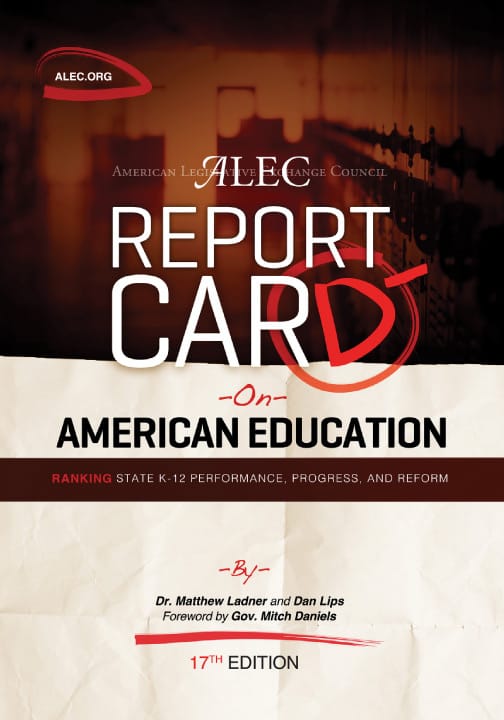 When the Wall Street Journal blessed 2011 as
the Year of School Choice, few advocates for public and private school options
passed up the chance to celebrate the benediction. But the American Legislative
Exchange Council knows that rhapsody will take the education reformer only so
far. ALEC’s latest annual report card on American K-12 education,
released this week, doubles as guidebook for the reformer who prefers “broad,
rather than incremental, reform,” as authors Matthew Ladner and Dan Lips write.
It’s a brazen assignment, but the Journal was right. It’s been a brazen
year.
When the Wall Street Journal blessed 2011 as
the Year of School Choice, few advocates for public and private school options
passed up the chance to celebrate the benediction. But the American Legislative
Exchange Council knows that rhapsody will take the education reformer only so
far. ALEC’s latest annual report card on American K-12 education,
released this week, doubles as guidebook for the reformer who prefers “broad,
rather than incremental, reform,” as authors Matthew Ladner and Dan Lips write.
It’s a brazen assignment, but the Journal was right. It’s been a brazen
year.
Moves to enhance tenure reform, merit pay, and transparency in public school performance all receive praise from ALEC, but it’s the “roaring comeback of parental choice” that signals the promise for academic gains. When Ladner and Lips note that low-income students in Washington, D.C., have made outsized leaps on the fourth- and eighth-grade NAEP reading and math exams, they point to an expanded public and private school market, combined with an audacious array of policy changes that recognized district teachers by their merit and eliminated administrative blockades to innovation. “Hall of Shame members ought to rethink their improvement strategies,” the authors conclude, referring to the bottom-dwelling states that have stumbled in their NAEP gains and, which incidentally, have done little to enhance choice, tenure reform and transparency.
Indiana has joined Florida as ALEC’s gold-standard state, adopting an A-through-F school-grading system, limiting collective bargaining among teachers and establishing what will ultimately be the most expansive school voucher program in the nation. Indiana’s comprehensive reforms now constitute ALEC’s model omnibus bill. And, Ladner and Lips assert, “reformers should study that model bill carefully.” But they don’t note that the state’s testing regimen will capture both public and publicly financed private school students, a standard of transparency that proponents and skeptics alike will scrutinize heavily and a standard that continues to be divisive in the choice movement.
The authors, too, are largely silent on the development of common core standards and assessments, now adopted by nearly every state in the wake of the Race to the Top strategies that embraced many of the reforms lauded in the ALEC report. That silence is not surprising, considering ALEC is one of the most vocal opponents to the common core model. But the gold-standard states of Florida and Indiana are among those that have adopted that model, and former Florida Gov. Jeb Bush, a revered figure in the report card, implored ALEC last summer to view the standards “as a floor from which states can build a framework of high-quality and rigorous coursework that equips all students with the knowledge and skills for success in life.”
The authors conclude the report by looking ahead to the promise of digital learning, which they argue is “a potentially game-changing reform that should appeal to a broad and diverse coalition of parents and constituents.” They’re right to call it game-changing, but the coalition won’t be as easy to build as they claim. Just ask The New York Times. But it might just be true, as they assert, that we’re at the “end of the beginning in the battle for K-12 reform.” Such a coalition is more conceivable now than ever.
This post originally appeared on the redefinED blog.